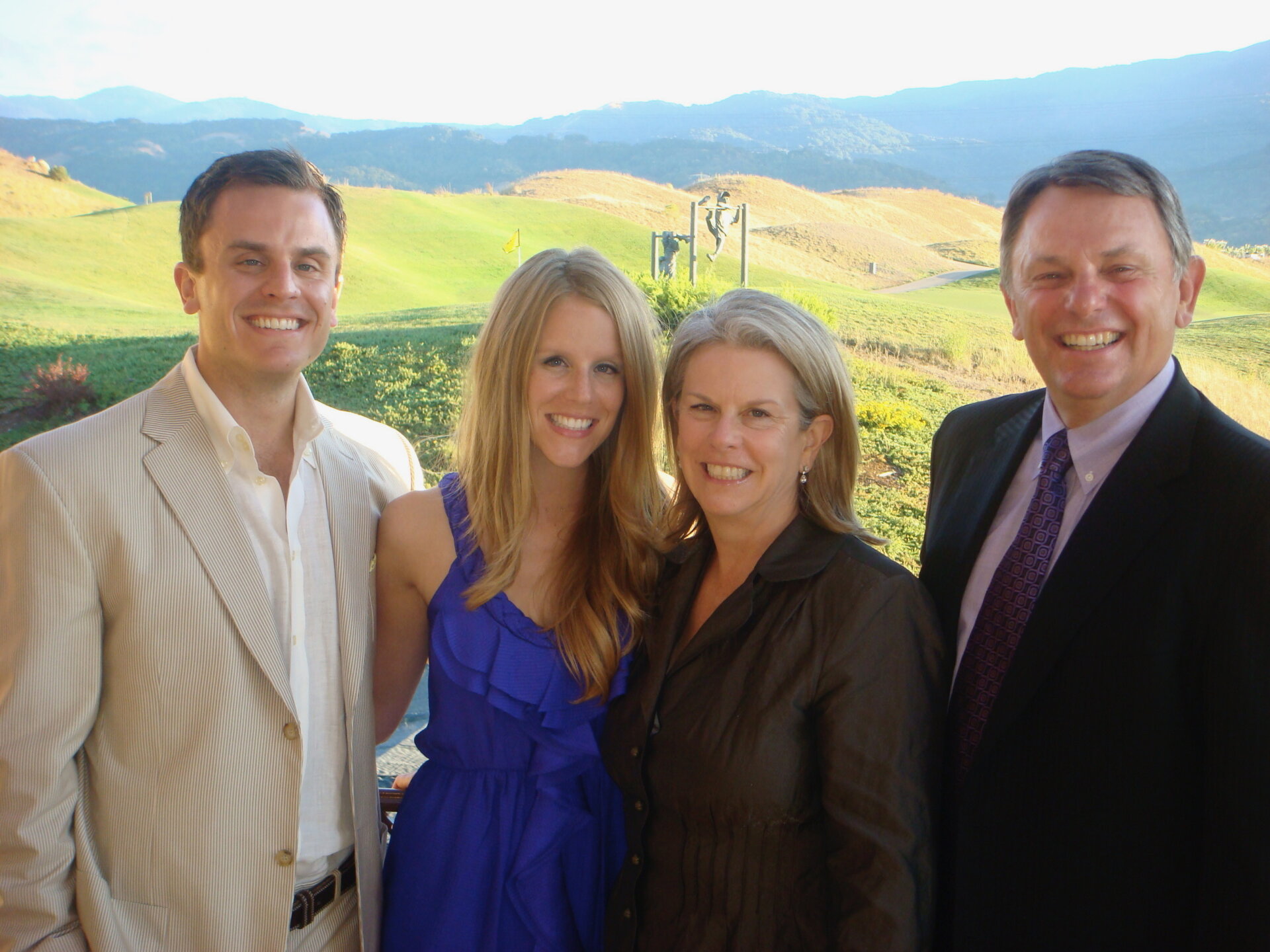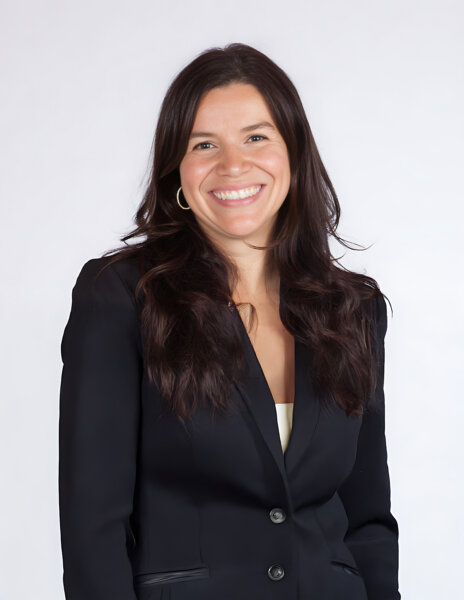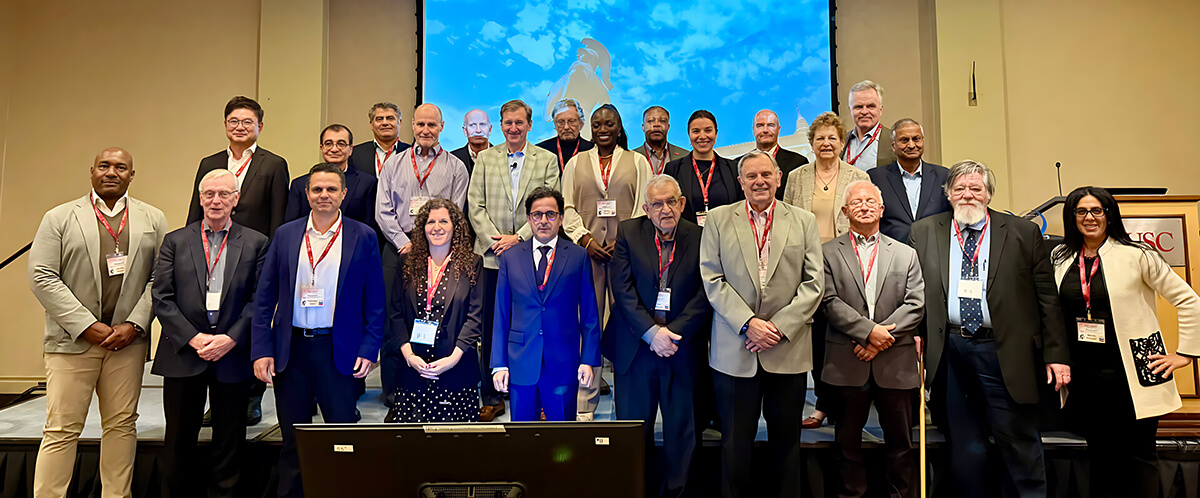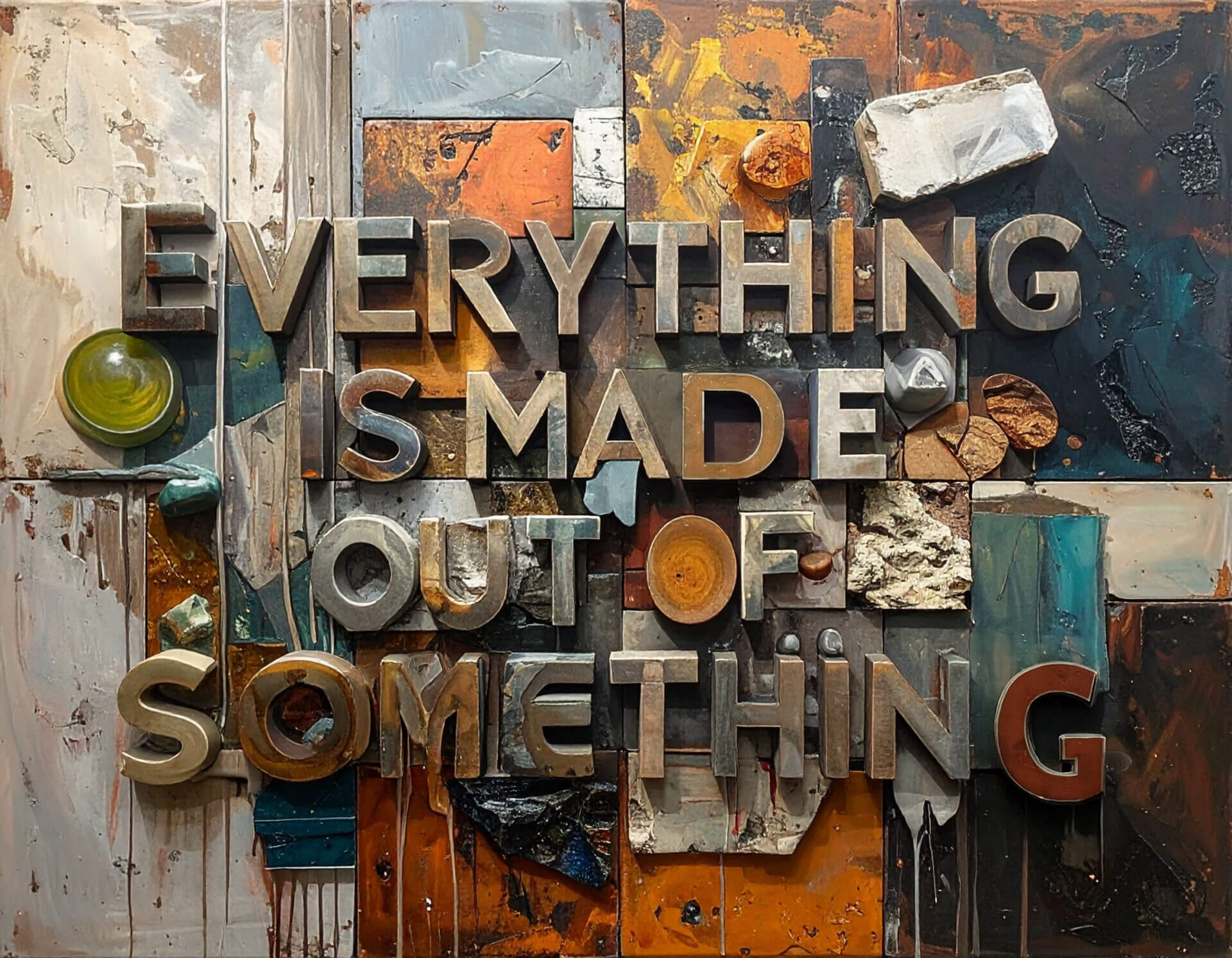‘Everything Is Made Out Of Something’

In 2017, when Hurricane Maria plunged Puerto Rico into the longest blackout in U.S. history, Ashley Maldonado Otero watched her island home struggle in darkness.
But amid the devastation, she witnessed something extraordinary: her community’s unwavering resilience in the face of catastrophe. That resilience inspired her to pursue a career in engineering to help make a difference in the energy and aerospace sectors. Now she’s recipient of the prestigious NASA Space Technology Graduate Research Fellowship, developing aerospace materials that could one day see her following in the footsteps of her fellow Puerto Rican, NASA chief astronaut Joseph Acaba.
Thousands of miles away in Huntington Park, Alejandra Felix grew up witnessing a different kind of crisis — the health care disparities that left her low-income community underserved and struggling. Rather than accept these inequities as inevitable, Felix channeled her determination into action, finding her calling as a Ph.D. student in USC Viterbi’s Graham Lab, where she’s now studying ways to overcome the limitations of CAR T-cell therapy for cancer and working toward better treatments for the patients who need them most.

Meanwhile, Ph.D. student Armando Urbina is pioneering polymeric materials that could revolutionize how we grow human organs and develop new medical treatments — research that promises to advance personalized medicine in unprecedented ways. But Urbina understands that scientific breakthroughs require more than individual brilliance; they demand community. On top of his work with the nonprofit Society of Hispanic Professional Engineers, Urbina launched a mentorship program that has guided 20 USC undergraduates through the complex journey of graduate applications, interviews and life-changing decisions.

These are the students that turn hydrocarbons into useful products, and corn into biofuels.
These are the students that design lighter, stronger, self-healing materials.
These are the students that turn molecules into lifesaving drugs.
In another time, they might have been called alchemists or magicians. But in 2025, Urbina, Felix and Maldonado Otero are just three of the students embodying the exciting future of the Mork Family Department of Chemical Engineering and Materials Science.
The Birth of the Mork Department
In 2005, a powerful chemical reaction took place. The catalyst: a transformative $15 million naming gift from energy entrepreneur and alumnus John Mork, his wife, Julie, and their family, which fused an enduring atomic bond between three research and teaching disciplines at USC: chemical engineering, materials science and petroleum engineering.
2025 marks the 20th anniversary of the formation of the Mork Family Department of Chemical Engineering and Materials Science. The unique atomic structure of this department has helped it grow into an interdisciplinary powerhouse that is now looking to the future to address the world’s most critical challenges: How will we generate the energy to meet society’s exponential needs in the age of AI? How will we craft the advanced materials to build our quantum devices and the biomaterials to enable vital medical advancements, from vaccines to cancer treatments? How can we convert waste into useful products and secure the food supply and consumer goods to support a growing global population?

Most importantly, the department is training our future leaders across these critical areas, with new programs and exciting new faculty hires to support research and teaching.
USC Viterbi Dean Yannis C. Yortsos joined the USC faculty of Chemical and Petroleum Engineering in 1978, so he has had a front-row seat as the department evolved.
“As we celebrate two decades since the transformative generosity of the Mork family, we are profoundly grateful for the vision that united the closely allied fields of chemical engineering, materials science, and petroleum engineering under one powerful name,” Yortsos said. “This was a vital turning point that enabled the department to transcend traditional boundaries and cultivate collective, interdisciplinary excellence in research and teaching. From pioneering innovative energy solutions to meet society’s exponential needs, to developing advanced materials for future technologies and making critical biochemical advancements, the Mork Family Department is at the forefront of shaping the future.”
USC President Emeritus C. L. Max Nikias played a key role in establishing the ambitious, newly named, newly merged department. Nikias, who was USC’s provost in 2005, worked closely with John and Julie Mork during his time as USC Viterbi dean to bring it to life.
“The endowed gift from John and Julie Mork to name the Chemical Engineering and Material Sciences Department, which also houses the Petroleum Engineering program, has been a catalyst for its academic growth and a remarkable legacy for the Mork family,” Nikias said. “We will forever be grateful for their generosity.”
Stronger together: A bold new era of collaboration

Andrea Hodge, the Fluor Professor in Engineering at USC Viterbi, believes that engineering will change the world, and the Mork Family Department is at the forefront of this change.
“I’m often accused of being a Pollyanna,” Hodge said, laughing. “Maybe it’s something that my brother calls the Colombian overoptimism.” In truth, she has a lot to feel positive about. As chair of the department since 2020, Hodge has overseen an exciting new era of interdisciplinary collaboration and renewed research and teaching strength in growing areas such as energy engineering and AI for materials discovery. For Hodge, this “collective excellence” is key when your department’s output makes up the fundamental building blocks of our world.
“Everything comes from these core disciplines. The world cannot run without energy. The world cannot run without materials — everything is made out of something. All of those core things are in this department,” Hodge said. “The sum of these parts is stronger than the individual parts, and that really has been my approach the whole time.”
The chemical and petroleum engineering and materials science disciplines have had a long and illustrious history at USC, ever since the first master’s degree in chemical engineering was awarded in 1921. Combining these academic strengths was a bold choice. But for John Mork, who earned his bachelor’s degree in petroleum engineering in 1970 and his master’s in 2012, both from USC, the department naming offered him, his wife and their family the chance to improve outcomes for students, who have always been their key priority.
“In this department, you’ve got the key pieces of what makes the world work,” said Mork, a USC trustee and former chairman who is also on the USC Viterbi Board of Councilors. “The Mork Family Department’s excellent leadership and professors have developed exciting courses of study that motivate and challenge students, resulting in future inventors, developers, entrepreneurs and leaders.”
Simply put, the goal for John and Julie Mork is for Mork Family students to become better than the best.
Theo Tsotsis, the Robert E. Vivian Chair in Energy Resources at USC, was department chair at the time of the historic naming in 2005, which he said had a tremendous impact in forging the identity of the new department.
“It gave us a sense of recognition in the eyes of the whole school. We were a small department at that point in time, and all of a sudden we became the named department. In many ways, the gift became the glue that kept our parts together,” Tsotsis said.
Powering up our future
The demand for energy in the United States is set to rise 25% by 2030, and a massive 78% by 2050, according to a recent study by consulting firm ICF. This growth — driven by the explosion in artificial intelligence, cloud computing, crypto mining and electric vehicles — will demand swift action and accelerated innovation in energy engineering and quantum materials.
A major source of that innovation? In 2022, the department launched the Ershaghi Center for Energy Transition (ECET) with the support of a generous gift from USC Viterbi alumnus Gary Buntmann and his wife, Mary. ECET’s mission is to explore the frontiers of energy technologies that can reduce environmental pollution caused by greenhouse gases and solve fundamental problems in existing and new energy sources.

“Our philosophy is that this country needs all of the energy we can get our hands on,” said Professor Iraj Ershaghi, whose 50-plus-year legacy in energy is reflected in the center’s name. “Especially since the invention of data centers and all the energy they require, we are forecasting that unless we use every source of energy, we’re going to run into problems.”
On the student front, the department launched a unique new graduate program this year. The Master of Science in Energy Engineering aims to train future leaders who will manage the sector’s seismic shift toward cutting-edge technologies — leaders who can navigate the intricate balance between new and legacy energy systems. It’s something that Hodge is especially proud of. She said students have already benefited from the program’s unique multidisciplinary perspective on energy transition. They will graduate in high demand for careers in a growing sector.
“Energy engineering is at the forefront of technology. Without energy, the world cannot function,” Hodge said. “Energy affects a wide range of fields, from transportation to food to communications. Every aspect of our life demands energy.”
The new energy economy and the AI boom are also fueling the need for highly skilled graduates to create the advanced materials critical to future technologies. To this end, the Mork Family Department launched a first-of-its-kind Master of Science in Materials Engineering with Machine Learning. It is a program that equips graduates with the vital skill sets needed to harness massive amounts of data for materials discovery, with applications spanning quantum computing, water filtration, advanced manufacturing and more.
Shaping a healthier human
If the Mork Department’s fundamental work centers on the very building blocks of our world — the materials, chemicals and energy we need to survive — equally as important are the building blocks of our biology. Researchers in the department are working on better understanding our cells — like how they interact with each other and the environment, which is knowledge that can aid clinicians in developing better drug therapies for some of our biggest medical challenges.
The department’s associate chair, Noah Malmstadt, is one of the faculty members leading the charge in this space. Malmstadt’s lab is currently examining nanoplastic pollution in our environment, and how these microscopic pollutants interact with and damage biological systems.
“We’ve built a set of tools that allows us to simulate nanoplastic particles in the lab and analyze how they damage cell membranes,” Malmstadt said. “We’ve made a bunch of discoveries regarding how the shape of the particle is really important for how it interacts with cells.”
New assistant professor Wade Zeno, who, like Malmstadt, works on cellular interfaces, is another emerging leader in this space, looking to understand the structure and function of cell membranes and membrane proteins. Professor Richard Roberts, former Mork Department chair, harnesses high-throughput engineering techniques to discover molecules for diagnosing and treating diseases, while Associate Professor Nicholas Graham applies tools from metabolic engineering to understand cancer.
The road ahead
The department, its faculty and staff continue to be grateful for the naming gift that helped make its interdisciplinary evolution possible.
“The Mork family has been so generous in trying to support the vision we have for our department, and that’s so important,” Hodge said. “They were willing to give it some time for it to grow and reach a point where now we really are operating in a seamless mix of disciplines.”
Hodge continues to remain optimistic about the future of her department and her field. For her, engineering is a profoundly positive force in the world that “makes the impossible possible.” The drive and innovation of the next generation — as seen in students like Maldonado Otero, Urbina and Felix — are Hodge’s everyday reminders of the Mork Department’s bright future.
“Maybe I’m very biased because I love engineering,” Hodge said. “But when things seem chaotic and unpromising, I think of our amazing students who are going to change the world through engineering innovations. A world of new technologies and prosperity for all.”




